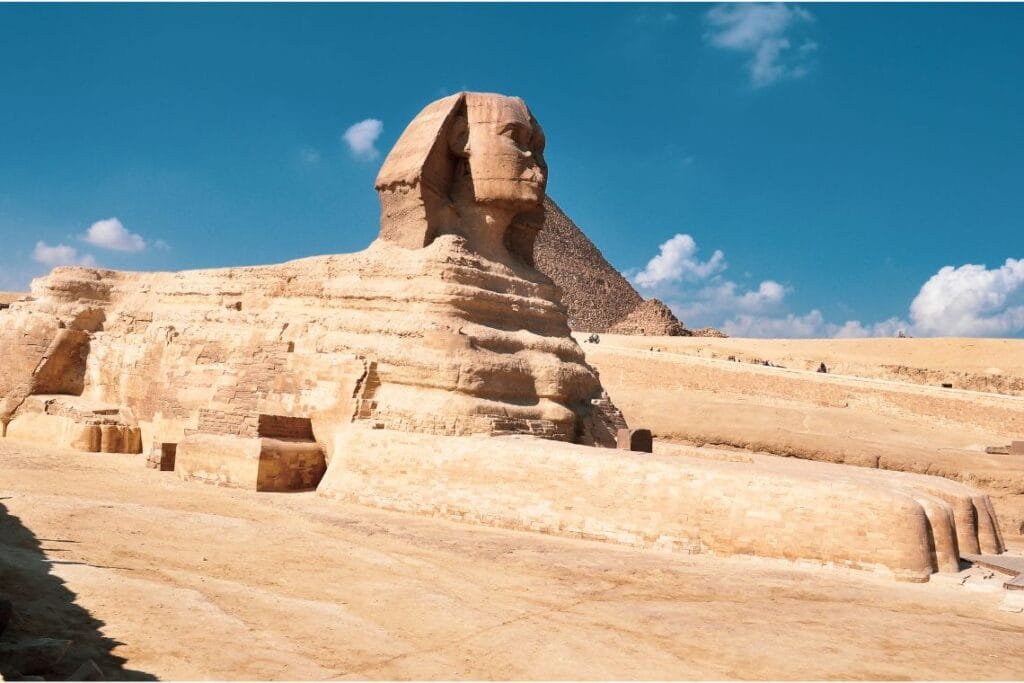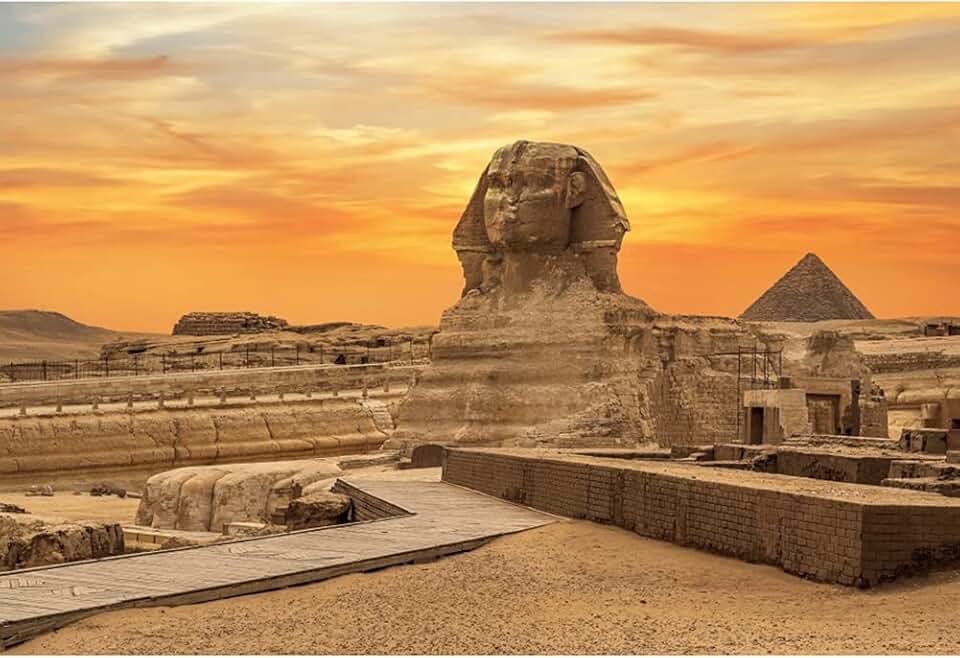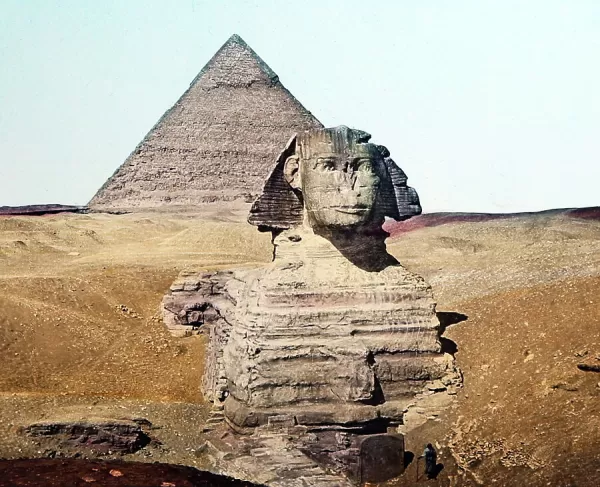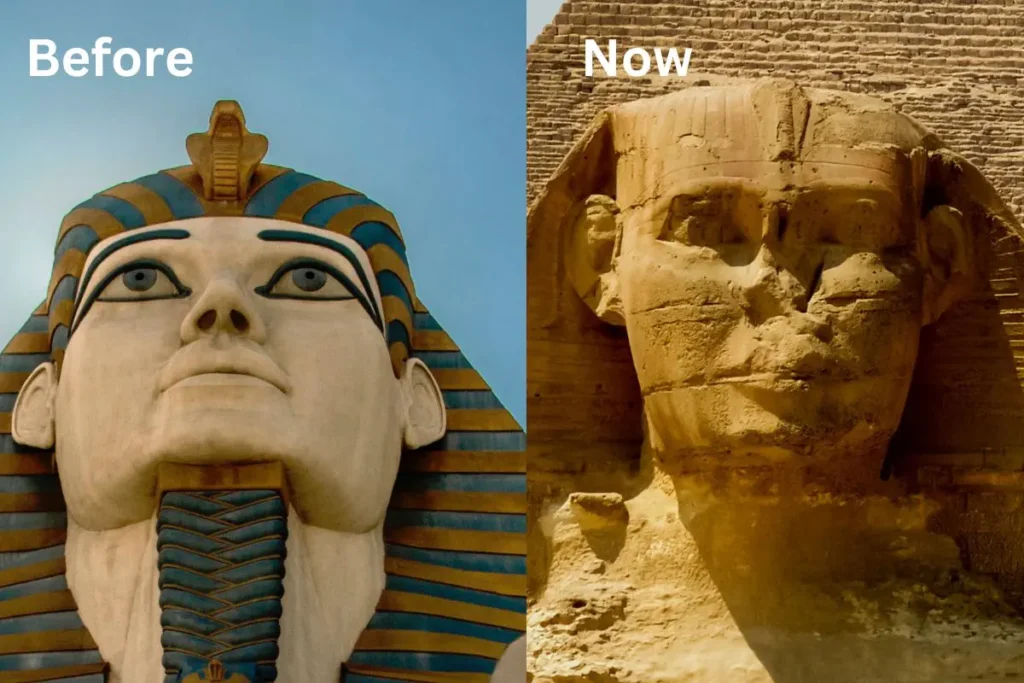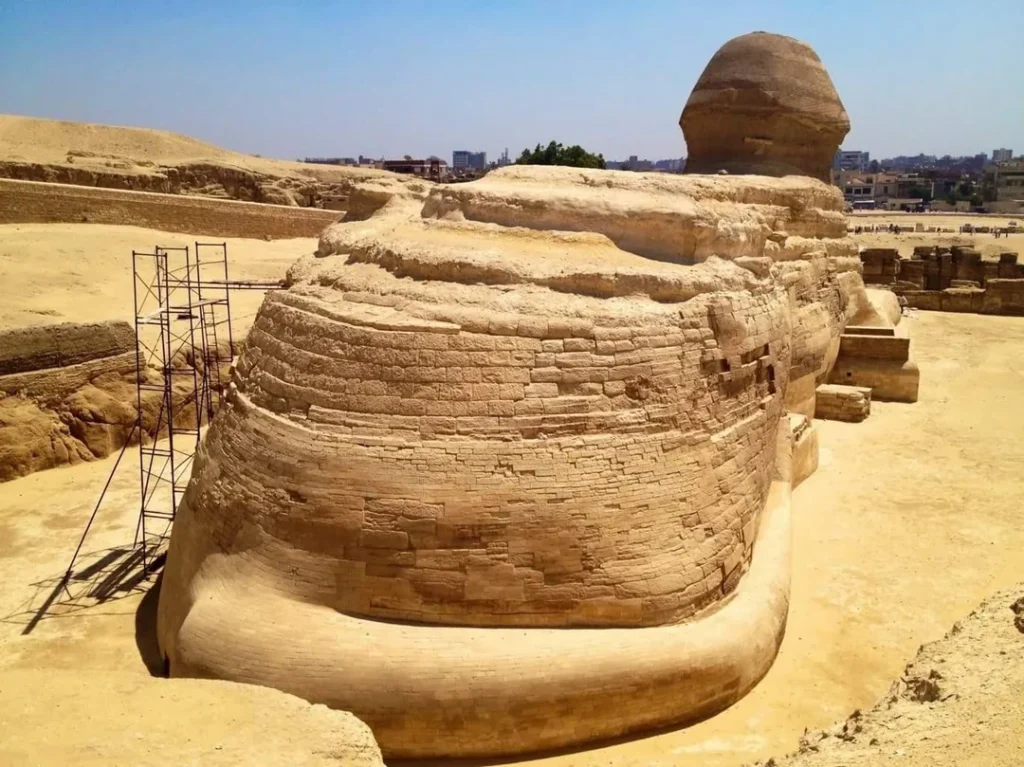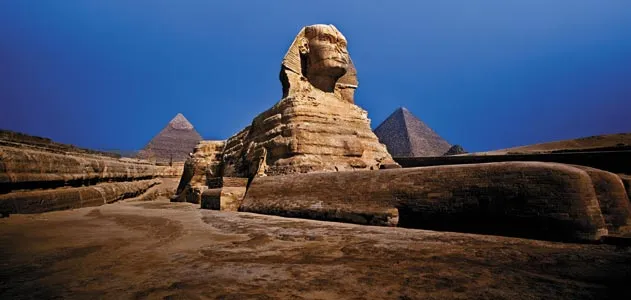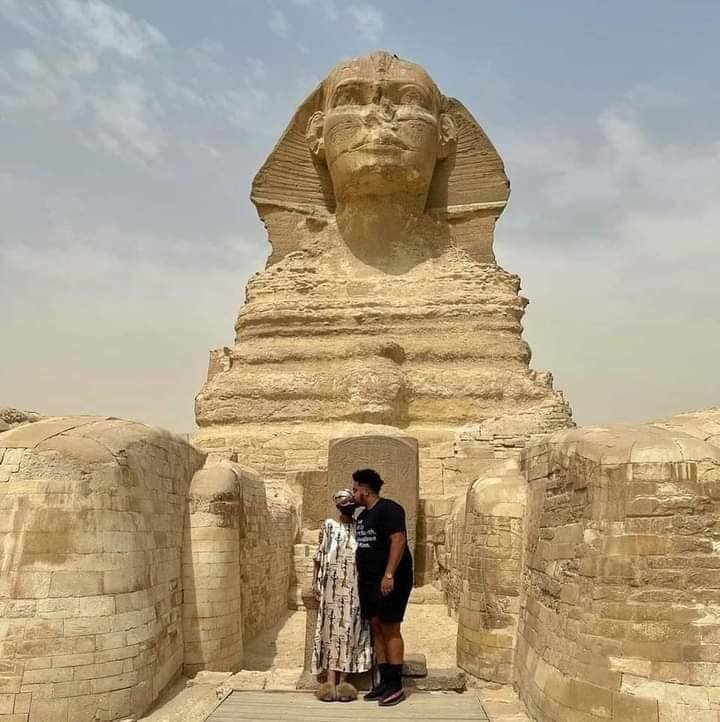The Great Sphinx of Giza, an iconic symbol of Ancient Egypt, stands as one of the world’s most famous and mysterious monuments. Located on the Giza Plateau, the Sphinx is a monumental limestone statue with the body of a lion and the head of a Pharaoh, traditionally believed to represent Pharaoh Khafre. This awe-inspiring structure has captivated travelers, historians, and archaeologists for centuries. Understanding its history, symbolism, and cultural significance provides travelers with an enriching experience when exploring the wonders of Egypt.
- Egypt Tour Magic
- Egypt Tour Packages
- Excursions in Egypt
- Cairo Tours and Excursions
- Hurghada Tours and Excursions
- Soma Bay Tours and Excursions
- Makadi Bay Tours and Excursions
- Sahl Hasheesh Tours and Excursions
- El Gouna Tours and Excursions
- Marsa Alam Tours and Excursions
- Port Ghalib Tours and Excursions
- El Quseir Tours and Excursions
- Dendera and Abydos Day Tours
- Aswan Tours and Excursions
- Luxor Tours and Excursions
- Alexandria Tours and Excursions
- Sharm El Sheikh Tours and Excursions
- Top Rated Tours in 2025
- Optional Excursions in Egypt
- Private Transfer
- Blogs About egypt
- Ancient Egypt
- What You Need To know Before Your First Trip To Egypt
- Best Places to Visit in Egypt 2025
- Top Attractions in Red Sea Resorts 2025
- Top 10 Tourist Activities in Egypt
- Top 30 Activities You Can’t Miss in Egypt
- The Guide to Guided Tours in Egypt
- Egypt’s Ancient and Modern History
- The Nile River
- The Deserts of Egypt
- Historical Sites in Egypt
- Cairo
- Alexandria
- Luxor
- Aswan
- The Red Sea
- Dendera Temple
- El Fayoum Oasis
- Bahariya Oasis
- Siwa Oasis
- Al Alamein
- Marsa Matruh
- Ancient Egyptian gods
- famous Egyptian dishes
- UNESCO World Heritage sites
- About Us
- Why Egypt Tour Magic
- Egypt Tour Magic
- Egypt Tour Packages
- Excursions in Egypt
- Cairo Tours and Excursions
- Hurghada Tours and Excursions
- Soma Bay Tours and Excursions
- Makadi Bay Tours and Excursions
- Sahl Hasheesh Tours and Excursions
- El Gouna Tours and Excursions
- Marsa Alam Tours and Excursions
- Port Ghalib Tours and Excursions
- El Quseir Tours and Excursions
- Dendera and Abydos Day Tours
- Aswan Tours and Excursions
- Luxor Tours and Excursions
- Alexandria Tours and Excursions
- Sharm El Sheikh Tours and Excursions
- Top Rated Tours in 2025
- Optional Excursions in Egypt
- Private Transfer
- Blogs About egypt
- Ancient Egypt
- What You Need To know Before Your First Trip To Egypt
- Best Places to Visit in Egypt 2025
- Top Attractions in Red Sea Resorts 2025
- Top 10 Tourist Activities in Egypt
- Top 30 Activities You Can’t Miss in Egypt
- The Guide to Guided Tours in Egypt
- Egypt’s Ancient and Modern History
- The Nile River
- The Deserts of Egypt
- Historical Sites in Egypt
- Cairo
- Alexandria
- Luxor
- Aswan
- The Red Sea
- Dendera Temple
- El Fayoum Oasis
- Bahariya Oasis
- Siwa Oasis
- Al Alamein
- Marsa Matruh
- Ancient Egyptian gods
- famous Egyptian dishes
- UNESCO World Heritage sites
- About Us
- Why Egypt Tour Magic
The Great Sphinx of Giza: Unraveling the Mysteries of Egypt’s Timeless Guardian
1. The Mystical Origins of the Sphinx
The Great Sphinx of Giza is one of the most significant monuments of Ancient Egypt, believed to have been constructed during the reign of Pharaoh Khafre around 2558–2532 BCE. This iconic statue combines the body of a lion with the head of a Pharaoh, likely representing Khafre himself. The lion’s body symbolizes strength, power, and protection, while the human head emphasizes intelligence and divine rule. The Sphinx was strategically positioned to stand as a guardian figure overlooking the Pyramids of Giza, ensuring the protection of the Pharaoh's tombs and sacred grounds. The monument’s association with the Pharaoh reflects Egypt’s belief in the ruler’s divine power, as the king was considered the intermediary between the gods and the people. For visitors to Egypt, the Sphinx offers a unique opportunity to connect with the ancient past and witness a symbol of divine kingship and protection.
2. Symbolism and Significance of the Sphinx
The Great Sphinx carries deep symbolic meaning in Egyptian culture, combining the majesty of the lion and the intellect of the Pharaoh. The lion’s body represents the strength, bravery, and regal authority of the Egyptian kings, while the human head highlights the Pharaoh’s wisdom, intelligence, and divine right to rule. The Sphinx is also linked to Ra, the sun god, as it faces directly east, symbolizing the rising sun and the Pharaoh’s connection to divine light and power. In Ancient Egypt, the Sphinx served as both a physical and spiritual protector of the royal tombs and sacred sites of the Giza Plateau. Its gaze, fixed towards the east, is believed to represent the eternal power of the sun, rising every day. For tourists, the symbolism of the Sphinx offers a deeper understanding of Egypt's religious beliefs and the Pharaoh’s pivotal role in maintaining cosmic order.
3. Architectural Marvel: A Monumental Wonder
Standing as one of the largest and most impressive statues in the world, the Great Sphinx is an architectural marvel. Carved from a single mass of limestone bedrock, the Sphinx stands 66 feet (20 meters) tall and stretches 240 feet (73 meters) in length, making it an awe-inspiring sight to behold. This colossal structure was meticulously shaped to create the body of a lion and the head of a Pharaoh, with extraordinary attention to detail despite its massive size. The Sphinx’s construction remains an extraordinary feat considering the limited tools and technology available to Ancient Egyptian builders. The monument has endured the passage of time, with its surface showing signs of erosion from natural elements, but it still manages to captivate visitors with its grandeur. For tourists, visiting the Giza Plateau provides an opportunity to experience the scale and magnificence of this ancient wonder firsthand.
4. Theories About the Sphinx’s Purpose and Creation
The purpose and origin of the Great Sphinx have been the subject of much scholarly debate for centuries. The most widely accepted theory is that the Sphinx was built during the reign of Pharaoh Khafre to serve as a guardian of the Giza Plateau, symbolizing the Pharaoh’s protective power. However, other theories suggest that the Sphinx was constructed even earlier, possibly predating Khafre’s time, and may have had a different purpose altogether. Some researchers speculate that it was built to honor the sun god Ra-Horakhty, due to its alignment with the rising sun. There are also suggestions that the Sphinx was a representation of the Pharaoh himself, embodying his divine nature and providing protection for his tomb. The enigma surrounding the Sphinx’s creation adds to its mystique, and for tourists, it creates an atmosphere of intrigue and wonder when visiting this ancient monument.
5. Erosion and Restoration Efforts
Over the centuries, the Great Sphinx has endured considerable damage due to natural erosion from the desert winds, sandstorms, and changes in the surrounding environment. The limestone structure has suffered significant weathering, particularly on its face, with many features, such as the nose, missing due to erosion or deliberate destruction. The Sphinx has also experienced damage from human activities over time, including attempted restorations and excavations. In modern times, Egyptologists and archaeologists have worked tirelessly to restore and preserve the Sphinx, employing various techniques to protect it from further deterioration. Restoration efforts have focused on stabilizing the structure and mitigating the damage caused by centuries of exposure. For visitors, seeing the Sphinx in its current state provides a glimpse into the challenges of preserving ancient wonders, and the ongoing restoration efforts reflect the commitment to safeguarding Egypt’s rich cultural heritage for future generations.
6. The Sphinx and Its Role in Egyptian Culture
The Great Sphinx was more than just a monumental sculpture—it was deeply embedded in the religious and cultural fabric of Ancient Egypt. Serving as a symbolic guardian, the Sphinx was thought to protect the Pharaoh’s tomb and the surrounding necropolis from evil forces. Its placement at the Giza Plateau, near the royal pyramids, reinforced its role as a divine protector. The Sphinx’s association with the Pharaoh also emphasized the ruler’s divine authority, reinforcing the belief that the king was both a political and spiritual figure, chosen by the gods to maintain cosmic order. Its connection to the sun god Ra further emphasizes its spiritual significance, as it symbolized the rising sun and the eternal cycle of life. For tourists exploring the Giza Plateau, understanding the cultural and spiritual role of the Sphinx adds another layer of depth to the experience, making it more than just a monumental statue.
7. Visiting the Sphinx: A Must-See for Tourists
The Great Sphinx of Giza is an absolute must-see for any traveler visiting Egypt, offering an unforgettable experience that combines history, mystery, and awe-inspiring architecture. Situated on the Giza Plateau alongside the Pyramids of Giza, the Sphinx is a testament to the ingenuity and skill of the Ancient Egyptians. As one of the most recognizable monuments in the world, it attracts millions of visitors each year who come to witness its grandeur and learn about its fascinating history. Tourists can explore the site, take in the panoramic views of the surrounding desert, and marvel at the Sphinx’s size and majesty. The Giza Plateau is also home to the Pyramids of Khufu, Khafre, and Menkaure, offering visitors a chance to immerse themselves in the mysteries of Ancient Egypt. A visit to the Sphinx is an essential part of experiencing the timeless allure of Egypt's ancient wonders.


